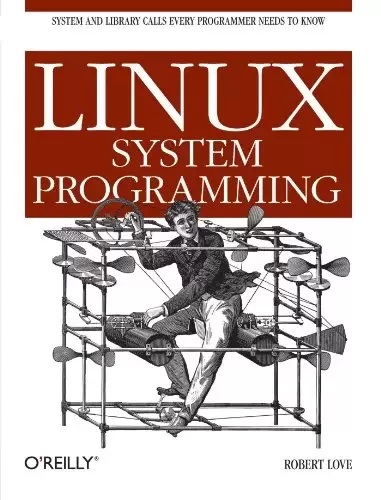
Book Description
This book is about writing software that makes the most effective use of the system you’re running on — code that interfaces directly with the kernel and core system libraries, including the shell, text editor, compiler, debugger, core utilities, and system daemons. The majority of both Unix and Linux code is still written at the system level, and Linux System Programming focuses on everything above the kernel, where applications such as Apache, bash, cp, vim, Emacs, gcc, gdb, glibc, ls, mv, and X exist.
Written primarily for engineers looking to program (better) at the low level, this book is an ideal teaching tool for any programmer. Even with the trend toward high-level development, either through web software (such as PHP) or managed code (C#), someone still has to write the PHP interpreter and the C# virtual machine. Linux System Programming gives you an understanding of core internals that makes for better code, no matter where it appears in the stack. Debugging high-level code often requires you to understand the system calls and kernel behavior of your operating system, too.
Key topics include:
- An overview of Linux, the kernel, the C library, and the C compiler
- Reading from and writing to files, along with other basic file I/O operations, including how the Linux kernel implements and manages file I/O
- Buffer size management, including the Standard I/O library
- Advanced I/O interfaces, memory mappings, and optimization techniques
- The family of system calls for basic process management
- Advanced process management, including real-time processes
- File and directories-creating, moving, copying, deleting, and managing them
- Memory management — interfaces for allocating memory, managing the memory you have, and optimizing your memory access
- Signals and their role on a Unix system, plus basic and advanced signal interfaces
- Time, sleeping, and clock management, starting with the basics and continuing through POSIX clocks and high resolution timers
With Linux System Programming, you will be able to take an in-depth look at Linux from both a theoretical and an applied perspective as you cover a wide range of programming topics.
中文:
书名:Linux System Programming: Talking Directly to the Kernel and C Library
这本书是关于编写软件,以最有效地利用您正在运行的系统上的代码,这些代码直接与内核和核心系统库交互,包括外壳、文本编辑器、编译器、调试器、核心实用程序和系统守护程序。Unix和Linux的大部分代码仍然是在系统级别编写的,并且 Linux系统编程 重点关注内核之上的所有内容,其中存在apache、bash、cp、vim、Emacs、GCC、gdb、glibc、ls、mv和X等应用程序。
这本书主要是为希望在低级编程(更好)的工程师编写的,是任何程序员的理想教学工具。即使有高级开发的趋势,无论是通过Web软件(如PHP)还是托管代码(C#),仍然需要有人编写PHP解释器和C#虚拟机。 Linux系统编程 让您了解有助于获得更好代码的核心内部结构,无论它出现在堆栈中的什么位置。调试高级代码通常还要求您了解操作系统的系统调用和内核行为。
主要主题包括:
- 概述Linux、内核、C库和C编译器
- 读写文件,以及其他基本的文件I/O操作,包括Linux内核如何实现和管理文件I/O
- 缓冲区大小管理,包括标准I/O库
- 高级I/O接口、内存映射和优化技术
- 这一系列系统需要基本的流程管理
- 高级流程管理,包括实时流程
- 文件和目录-创建、移动、复制、删除和管理它们
- 内存管理用于分配内存、管理您拥有的内存和优化内存访问的接口
- 信号及其在Unix系统中的作用,以及基本和高级信号接口
- 时间、睡眠和时钟管理,从基础开始,一直到POSIX时钟和高分辨率定时器
使用 Linux系统编程,您将能够从理论和应用的角度深入了解Linux,因为您涵盖了广泛的编程主题。
评论前必须登录!
注册